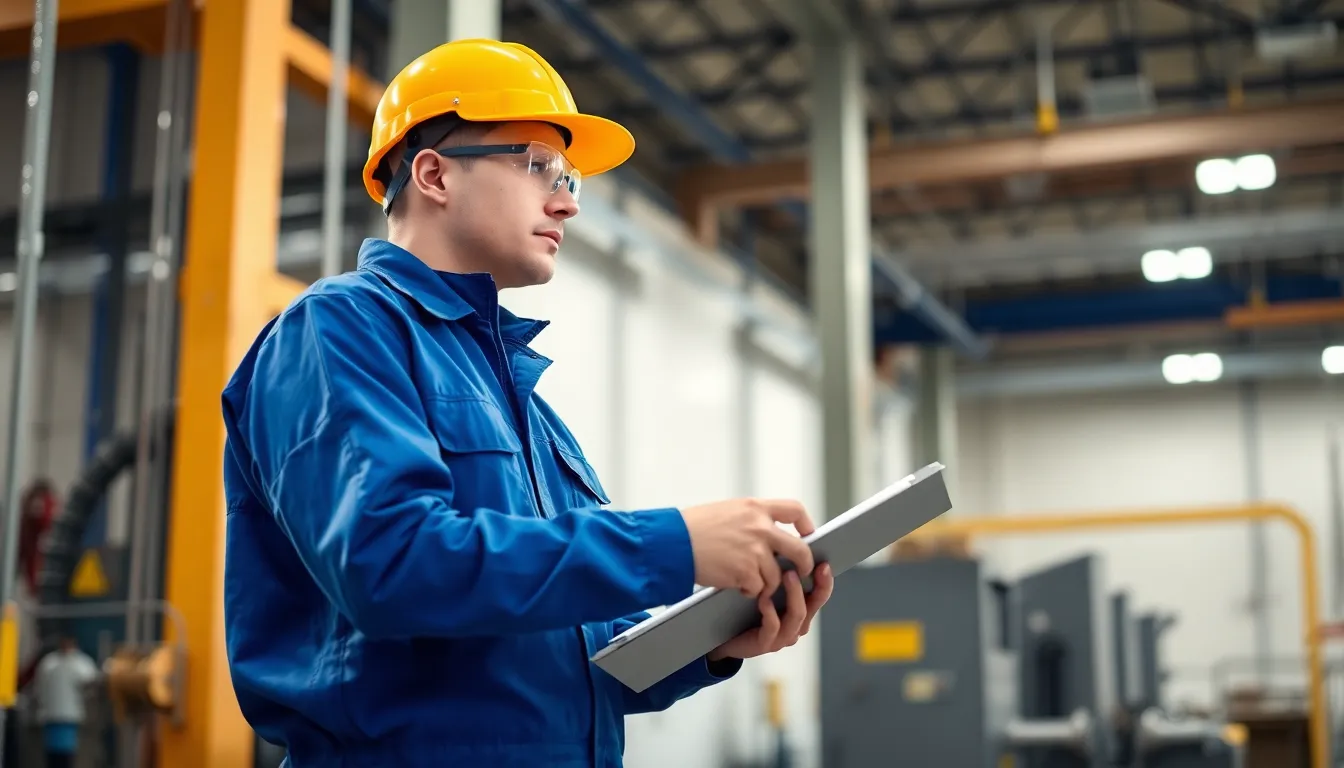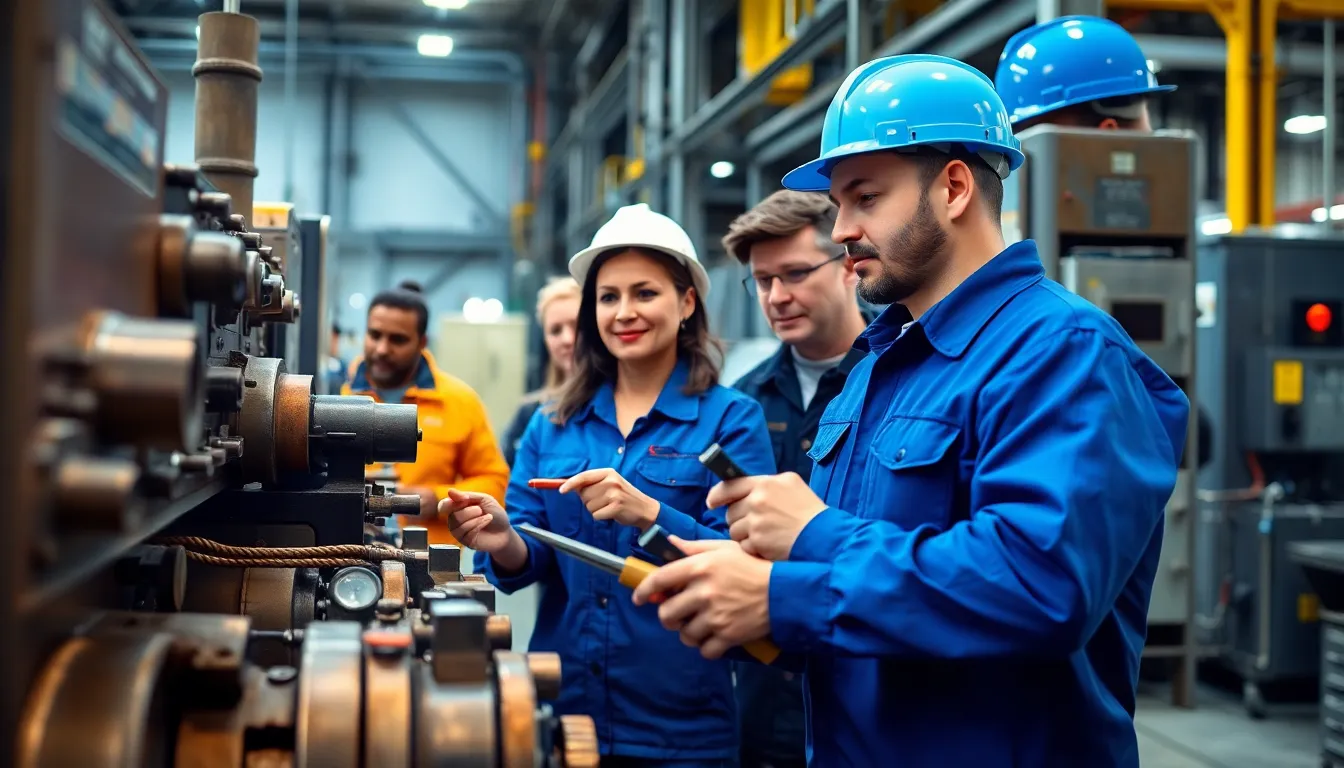In a world where breakdowns can turn a smooth operation into chaos faster than you can say “oops,” building a solid preventive maintenance plan is the unsung hero every business needs. Imagine a life where machinery runs like a well-oiled machine—literally! By investing in preventive maintenance, companies can dodge costly repairs and keep their equipment in tip-top shape.
Table of Contents
ToggleUnderstanding Building Preventive Maintenance
Building preventive maintenance refers to the proactive approach organizations take to maintain equipment and systems. It focuses on regular inspections and timely repairs to prevent unexpected failures.
Definition and Importance
Preventive maintenance includes scheduled tasks designed to prolong the lifespan of assets. This strategy ensures equipment operates effectively, minimizes potential downtime, and enhances safety. Prioritizing preventive maintenance helps businesses maintain compliance with industry regulations. The failure to implement such a strategy can lead to expensive emergency repairs and loss of productivity. An efficient preventive maintenance plan clearly identifies when and how services occur, allowing for systematic resource allocation.
Benefits of Preventive Maintenance
Effective preventive maintenance offers numerous advantages. First, it lowers operational costs by reducing emergency repair expenses. Second, it increases equipment reliability by addressing issues before they escalate. Third, safety improves dramatically with regular equipment checks that prevent hazardous malfunctions. Additionally, preventive maintenance can extend the lifespan of machinery, maximizing investments and improving return on assets. With well-maintained systems, businesses often see enhanced customer satisfaction due to consistent service delivery.
Key Components of Building Preventive Maintenance


Building an effective preventive maintenance strategy relies on several crucial components. These essential practices ensure that equipment remains operational and minimizes costly downtime.
Regular Inspections
Conducting regular inspections plays a vital role in preventive maintenance. Inspections identify potential issues before they escalate into major problems. Scheduling these assessments at consistent intervals helps maintain optimal equipment performance. Organizations often discover wear and tear through routine assessments, allowing timely interventions. Personnel examine machinery components, lubrication systems, and safety mechanisms during inspections. This proactive measure protects assets and reduces the risks associated with unexpected equipment failures.
Scheduled Maintenance Tasks
Implementing scheduled maintenance tasks ensures systematic care of equipment. Task schedules define specific intervals for various maintenance activities, such as lubrication, adjustments, and replacements. Following these schedules promotes reliability and enhances the longevity of machinery. Maintenance teams prioritize tasks based on usage frequency and criticality, keeping crucial systems in optimal condition. Teams can streamline processes and allocate resources effectively by adhering to a well-defined schedule. Balancing scheduled tasks with operational demands prevents interruptions and boosts overall productivity.
Developing a Preventive Maintenance Plan
Establishing a preventive maintenance plan requires careful consideration of various factors. This strategy maximizes equipment reliability and minimizes downtime through organized efforts.
Assessing Building Needs
Assessing the specific needs of the building involves identifying critical systems and equipment. Evaluating current performance helps to understand which assets require more attention. Engaging with maintenance personnel provides insights into recurring issues and potential improvements. Acquiring data through inspections allows for a comprehensive overview of what requires preventive measures. Tailoring the plan to individual equipment ensures that priorities align with operational requirements.
Creating a Maintenance Schedule
Creating a maintenance schedule is essential for systematic upkeep of equipment. Establishing specific intervals for tasks keeps the machinery functioning optimally. Using a calendar or maintenance management software aids in tracking scheduled activities. Organizing inspections, lubrication, adjustments, and more provides clarity on when to perform each task. Aligning the schedule with operational demands prevents disruptions and improves overall productivity. Adapting the frequency of tasks based on equipment usage can enhance resource allocation.
Implementing Preventive Maintenance Strategies
Implementing preventive maintenance strategies involves structured approaches that enhance equipment reliability and operational efficiency.
Staff Training and Responsibilities
Training staff on preventive maintenance ensures they understand their roles in the process. Employees require knowledge of equipment operation, potential failure indicators, and maintenance schedules. Assigning specific responsibilities fosters accountability and encourages a proactive maintenance culture. Regular training sessions reinforce skills and update personnel on new technologies or techniques. Empowering staff to report issues enhances the overall monitoring of equipment health. This collaborative approach minimizes downtime and preserves asset integrity.
Utilizing Technology and Tools
Technology plays a significant role in streamlining preventive maintenance efforts. Advanced maintenance management software aids in scheduling tasks and tracking performance metrics. IoT devices monitor equipment conditions in real-time, allowing for immediate identification of anomalies. Utilizing mobile applications enables technicians to access maintenance information on-site, ensuring prompt actions. Data analytics can uncover patterns in equipment behavior, guiding preventive strategies. Integrating these tools increases efficiency, reduces human error, and enhances decision-making processes.
Measuring the Effectiveness of Preventive Maintenance
Measuring the effectiveness of preventive maintenance involves assessing performance metrics that indicate how well the maintenance strategy functions.
Key Performance Indicators
Key performance indicators (KPIs) serve as essential metrics for evaluating preventive maintenance success. Common KPIs include equipment downtime, maintenance costs, and the frequency of breakdowns. Equipment downtime highlights the amount of operational stoppage caused by failures, while maintenance costs reflect the financial investment in preserving assets. The frequency of breakdowns indicates how often equipment fails despite maintenance efforts. By tracking these indicators, organizations can gauge maintenance effectiveness and pinpoint areas needing improvement. Comprehensive analysis of these KPIs allows businesses to make informed decisions to optimize their preventive maintenance strategies.
Adjusting the Plan Based on Results
Adjusting the preventive maintenance plan ensures relevance and effectiveness based on collected data. Regular reviews of performance metrics identify trends and recurring issues, prompting necessary modifications. For instance, if equipment frequently fails despite scheduled maintenance, organizations may need to revise the maintenance frequency or methods. Involving maintenance personnel in evaluations also enriches the decision-making process, as their first-hand experience provides valuable insights. Organizations can adapt their strategies to suit changing operational demands, ultimately ensuring continuous improvement in equipment reliability and efficiency. Regular adjustments close the feedback loop, making preventive maintenance a dynamic process tailored to specific needs.








